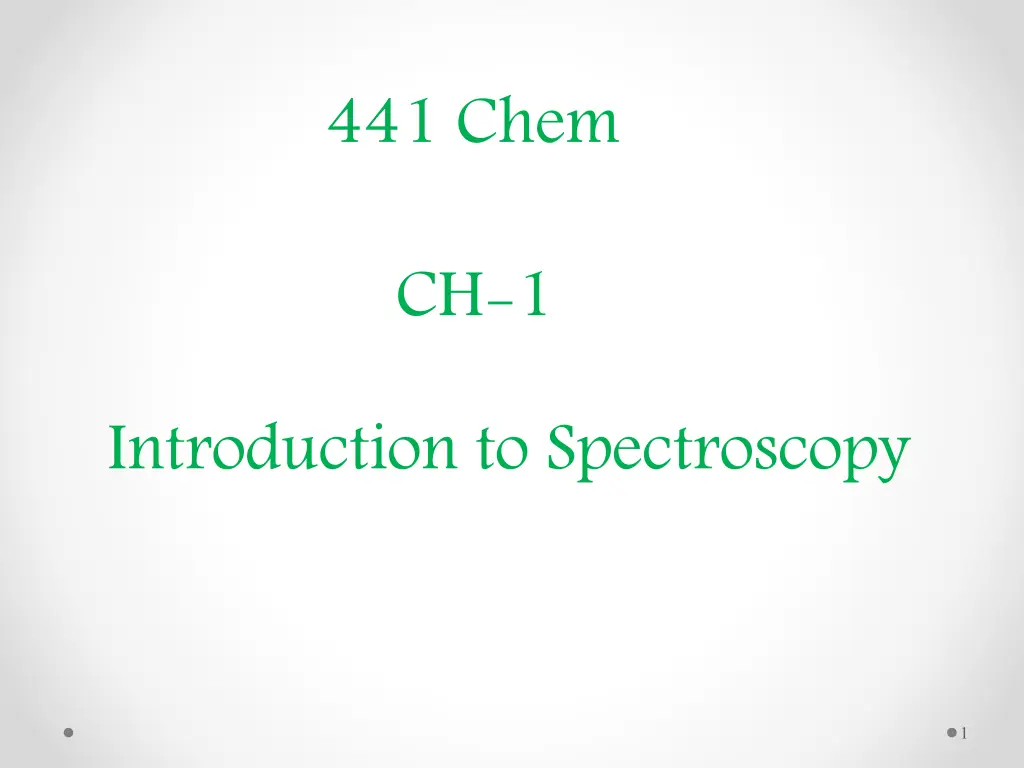
Introduction to Spectroscopy Methods and Energy Transitions
Explore the world of spectroscopy with a focus on electromagnetic radiation interactions with molecules, energy quantization, electromagnetic spectrum, internal energy of molecules, types of spectroscopy, and energy transitions in different regions of the electromagnetic spectrum. Dive into wavelengths, frequencies, and information gained through spectroscopic methods in organic chemistry.
Download Presentation

Please find below an Image/Link to download the presentation.
The content on the website is provided AS IS for your information and personal use only. It may not be sold, licensed, or shared on other websites without obtaining consent from the author. If you encounter any issues during the download, it is possible that the publisher has removed the file from their server.
You are allowed to download the files provided on this website for personal or commercial use, subject to the condition that they are used lawfully. All files are the property of their respective owners.
The content on the website is provided AS IS for your information and personal use only. It may not be sold, licensed, or shared on other websites without obtaining consent from the author.
E N D
Presentation Transcript
441 Chem CH-1 Introduction to Spectroscopy 1
Introduction to Spectroscopy Set of methods where interaction of electromagnetic radiation with chemical molecules. Electromagnetic Radiation C = C = V = = Frequency of Radiation (Hertz or S-1) = Wave Length (cm) V = Wave Number (cm-1) C = Velocity of light (constant) = 3 x 1010cm/sec 2
The energy of quantum: C E = h = h h (Planck's constant) = 6.62 x 10-27(Erg/sec) 3
The Electromagnetic Spectrum Frequency ( ) high high low low Energy MICRO- WAVE X-RAY ULTRAVIOLET INFRARED RADIO FREQUENCY Nuclear magnetic resonance Vibrational infrared 2.5 m Visible Ultraviolet 15 m 1 m 5 m 200 nm 400 nm BLUE 800 nm RED Wavelength ( ) short long 4
Internal Energy of Molecules: Etotal= Eelec+Evib+Erot Eelec: Electronic transitions Evib: Vibrational transitions Erot: Rotational transitions The Excitation process 5
Type of Spectroscopy: 1- Emission Spectroscopy 2-Absorption Spectroscopy Absorption Spectroscopy 1.0 Absorbance 0.0 200 800 400 Wavelength, 6
Types of Energy Transitions in Each Region of the Electromagnetic Spectrum REGION ENERGY TRANSITIONS X-ray Bond-breaking Electronic Vibrational Rotational UV/Visible Infrared Microwave Nuclear and Electronic Spin Radio Frequency 7
Summary of Spectroscopic Methods in Organic Chemistry Wavelength And (Frequency) The effect of radiation on molecular Electromagnetic Radiation Information learned Ultraviolet and Visible 200-800 nm (1.5x1015- 3.7x1014Hz) Changes in the electronic energy levels within the molecule Unsaturated bonds alternating with nonbonding electrons Infrared 2.5-15 um (1.2x1014- 2.0x1013Hz) Changes in the vibrational and rotational energy levels in the molecule Detection of functional groups in the compound Radio Frequency Nuclear Magnetic Resonance 5-0.5 m (60-600 MHz) Changes in the magnetic properties of some nuclei of atoms Detect the type and number of hydrogen and carbon atoms in the compound and find out different chemical environments Mass Spectrum Ionization and fragmentation of compound to ions Broken Determination of Molecular weight of the compound and detection of the molecular structure from broken molecules resulting --- 8





